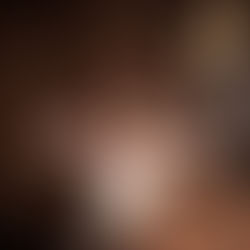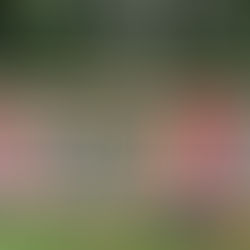

"Vanilla Flavor Bars: Comparing the Legends of Vanilla to the GOATs of Rap"
Dec 12, 2024
5 min read
3
49
0
The wise person who told me to start a blog also told me to write what I know. I feel like I’m one of those people who know a little bit about a lot of things. Jack of all trades, master of none.

One of the things that has become increasingly interesting to me this past year are vanilla beans and vanilla extract. Why? Well, one of my best girls gave me some homemade vanilla extract last year. Let me tell you, friends—GAME CHANGER. While my husband is actually the baker of the family (lucky me, right?), I’ve very much enjoyed adding this dark deliciousness to homemade whipped cream, coffee, and even teas. I’ve also dabbled with it in oatmeal (yes, oatmeal—don’t knock it till you try it!). I hope to find a shelf-stable recipe (jam, jelly, etc.) that I can start incorporating extract, and even better, vanilla paste.
In the meantime, I give you… all things VANILLA. While this post might not excite everyone (sorry, savory food folks), I’m sure there are some who will find it interesting—and likely, many bakers who will say “… you didn’t already know this greatness?”. No, friends. I did not. But I’m glad I do now.
Vanilla Extract: The OG – if this were rap, we’re talking Kool Herc.
Let’s kick things off with vanilla extract—the classic. If you’ve ever baked a batch of cookies, made a cake, or even thrown together some homemade whipped cream, you've probably reached for this liquid gold. Vanilla extract is a staple in kitchens everywhere. It's made by soaking vanilla beans in alcohol (and sometimes a touch of water), which pulls out all that sweet, floral goodness. This magic concoction adds depth and richness to your favorite recipes, making everything taste just a little bit better (and maybe even feel a little fancier). The extract that I’ve been working on has been in the works for a year now, so it’s pretty much ready for greatness. Throw ha hands up. IYKYK.
Science Moment (Hold on to your whisks!): The secret to vanilla extract’s unmistakable flavor is a compound called vanillin. This little molecule is what gives vanilla its signature sweet, creamy flavor. It’s like the VIP guest at the flavor party—always stealing the show. When you choose “pure” vanilla extract, you’re getting the real deal, which is why it can be a bit pricier than imitation vanilla flavoring (more on that later).
While it’s perfect for most recipes, vanilla extract doesn’t offer much in terms of visual appeal. Where are the beautiful little vanilla bean specks? You know, the ones that make your dessert look like you actually know what you’re doing? Not in vanilla extract, my friend.
Vanilla Flavoring: The Budget-Friendly Sidekick, think Milli Vanilli.
Now, let’s talk about vanilla flavoring—often labeled as “imitation vanilla.” While this might not be the superstar of the vanilla world, it’s certainly the affordable option. Made with synthetic versions of the flavor compounds in vanilla beans (most commonly ethyl vanillin, which is like the cousin of vanillin), this alternative is what you’ll find in a lot of processed foods, ice creams, and cheap vanilla-scented candles (please, no one ever put this in a dessert).
Science Moment (Again, bear with me): Ethyl vanillin mimics the flavor of real vanilla (or so I read), but it tends to be a little more one-note. Imagine going to a Milli Vanilla concert as a young girl, only to find out later that they were just lip syncing marionettes. If you're looking for a quick fix or something to use in non-baking recipes, vanilla flavoring can work. But if you’re making something special, don't blame it on the rain when your dessert is a total bust.
Vanilla Paste: The Vanilla Superstar – Tupac, Biggie Smalls….
Cue the drumroll, because this is where things get exciting: Vanilla paste is the true star of the vanilla world. If vanilla extract is the classic, and vanilla flavoring is the sidekick (or less than), then vanilla paste is like the Queen Latifah of the vanilla family—full of flavor, fabulous, and just a little bit extra. Ok, a lot. A lot a bit extra. And total badass.
Vanilla paste is made by blending real vanilla bean seeds (yes, the tiny black specks that look fancy in your desserts), vanilla extract, and a thickening agent like xanthan gum. The result? A rich, concentrated vanilla paste that’s not only packed with flavor but also adds that visual touch of authenticity that makes your desserts look like they came from a high-end bakery (and who doesn’t want that?).
Why Vanilla Paste Is Basically Magic:
Vanilla Bean Seeds Galore – AKA VANILLA CAVIAR: The tiny specks of vanilla bean are not just for show—they’re packed with flavor! When you use vanilla paste, you get the full sensory experience, from flavor to aroma to the sight of those gorgeous specks scattered through your dish.
More Flavor, Less Work: Vanilla paste is more concentrated than vanilla extract. This means you need to use less of it to get that full, rich flavor. It's like the difference between a casual high school band and a Grammy-winning artist. You get the essence of vanilla in every bite, without needing to measure out a ton of liquid.
Versatility on Steroids: You can swap vanilla paste for vanilla extract in pretty much any recipe, but it really shines in recipes where vanilla takes center stage. Think custards, cakes, cookies, ice creams—you name it. Vanilla paste adds a bit of extra flair and elevates the flavor to a whole new level.
Texture That Matters: Vanilla paste’s thickness can help give your recipes a lovely, silky texture, especially in custards or frostings. It’s not just about flavor; it’s about giving your creations that little extra something.
Science Moment (Oh yes, one more!): Vanilla paste is basically the dream team of vanilla. You get the rich, deep flavor of vanilla extract plus the full-bodied, complex aroma of the vanilla beans themselves. The result is a flavor that’s incredibly authentic and nuanced. When you use it, you're not just adding flavor—you’re enhancing the whole experience.
How to Use Vanilla Paste
So, you’ve got your hands on some vanilla paste—now what? The best part is, it’s super easy to use, and a little goes a long way. Here are some ideas to get you started:
Baking: Add a spoonful of vanilla paste to your cookies, cakes, or muffins. It’s like giving your batter a VIP upgrade.
Whipped Cream: Vanilla paste transforms simple whipped cream into a luxurious topping that’s perfect for pies, cakes, or even just spooning into your mouth (no judgment here).
Ice Cream: Make homemade vanilla ice cream with vanilla paste for a creamy, full-bodied flavor that’ll make you question store-bought options forever.
Drinks: I’ve tried it in coffee and tea, and let me tell you—delicious. It’s like giving your morning cup a burst of flavor that feels fancy without being a hassle.
So, What’s the Verdict?
If you want a luxurious flavor experience with those beautiful specks of vanilla bean, vanilla paste is your new best friend. It gives you the full sensory experience—the deep, rich flavor, the stunning visuals, and the creamy texture. While vanilla extract will always be a kitchen classic, and vanilla flavoring might work in a pinch, if you're really looking to treat yourself (and your taste buds), vanilla paste is the way to go.
In the end, it’s all about finding the right vanilla product for your needs – maybe you wanna be a Fly Girl or just Keep Ya Head Up. But now that you know about vanilla paste, you may just never go back to plain old extract again – though the respect is REAL. Trust me, once you try it, you’ll be wondering how you ever lived without it. And for all those bakers who knew about vanilla paste long before I did—thank you for sharing your vanilla wisdom with me. You were right all along!
All in all, Vanilla is the *Baker’s Delight. Get it?





